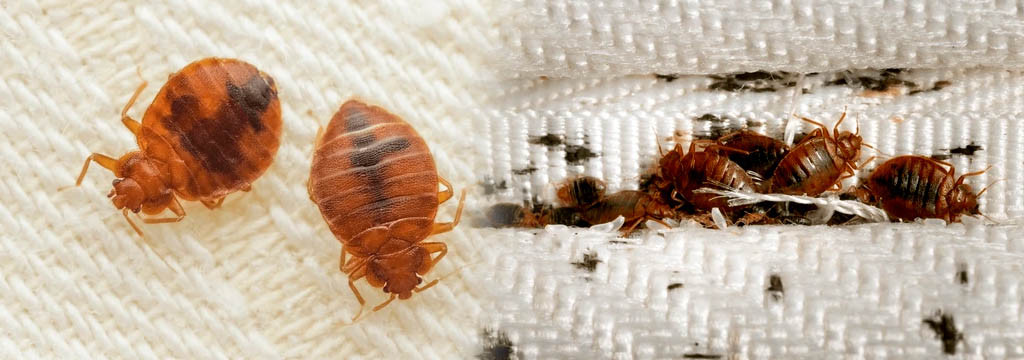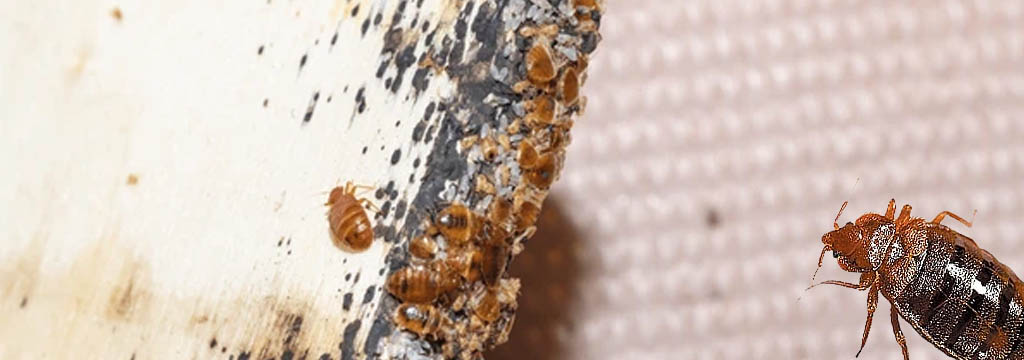
Bed Bug Control Services offer expert solutions to detect, eliminate, and prevent bed bug infestations in residential and commercial properties. Our experienced technicians use advanced detection methods and eco-friendly treatments to ensure complete eradication of bed bugs at all life stages. We provide thorough inspections, customized treatment plans, and follow-up services to ensure lasting results. With a focus on safety, discretion, and customer satisfaction, our services guarantee a bed bug-free environment, allowing you to rest easy. Trust us to handle your bed bug problems efficiently and effectively.

Bed bugs are small, reddish-brown insects that feed on the blood of humans and animals, typically during the night. Known for their resilience and ability to hide in small crevices, they are a common pest in homes, hotels, and other lodging facilities. Bed bugs can cause itchy bites, allergic reactions, and anxiety. There are primarily two types of bed bugs:
Cimex lectularius: The common bed bug, found worldwide, prefers temperate climates and is most commonly associated with human habitats. They infest beds, furniture, and other close-to-sleeping areas.
Cimex hemipterus: The tropical bed bug, more common in tropical regions, has similar behaviors and habitats to the common bed bug but thrives in warmer climates.
Understanding these types helps in effective identification and tailored control measures to eradicate infestations.
Recognizing these signs early is crucial for prompt treatment and eradication of bed bug infestations to prevent further spread and discomfort.
Inspect Secondhand Items: Thoroughly inspect used furniture, mattresses, and clothing for signs of bed bugs before bringing them into your home.
Encase Mattresses and Box Springs: Use bed bug-proof encasements on mattresses and box springs to prevent bed bugs from entering or escaping.
Reduce Clutter: Declutter your home to minimize hiding spots for bed bugs. Dispose of or store items in sealed containers.
Regular Cleaning: Vacuum and clean your home regularly, paying attention to cracks, crevices, and other potential hiding places for bed bugs.
Be Cautious When Traveling: Inspect hotel rooms and accommodations for signs of bed bugs before unpacking. Keep luggage off the floor and use luggage racks when possible.
Seal Cracks and Crevices: Seal cracks and crevices around baseboards, electrical outlets, and pipes to reduce potential entry points for bed bugs.
Be Mindful of Shared Laundry Facilities: Be cautious when using shared laundry facilities, particularly in apartment buildings or dormitories. Inspect and dry clothing on high heat if possible.
Use Bed Bug Monitors: Consider using bed bug monitors or traps in key areas such as beds and furniture to detect bed bugs early.
Educate Yourself: Learn about signs of bed bugs and regularly monitor for any potential infestations in your home.
Consult Professionals: If you suspect a bed bug infestation or need assistance with prevention strategies, consult with a licensed pest control professional for expert advice and treatment options.
By implementing these preventive measures, you can significantly reduce the risk of bed bug infestations and maintain a bed bug-free environment in your home.

We will conduct a deep and thorough inspection to determine the type of pests that are infesting your premises, the source of the infestation, their breeding sites and the conducive conditions.
 We provide a wide range of chemical and non-chemical products that can effectively reduce any pest’s infestation and guarantee an efficient control of the pest problem or high maintenance of the pest-free environment.
We provide a wide range of chemical and non-chemical products that can effectively reduce any pest’s infestation and guarantee an efficient control of the pest problem or high maintenance of the pest-free environment.
 Our professional team will follow up to evaluate the efficiency of the treatments and take the necessary control measures to guarantee a long-lasting protection.
Our professional team will follow up to evaluate the efficiency of the treatments and take the necessary control measures to guarantee a long-lasting protection.






Opening Hours:
Monday – Saturday 8am – 6pm
Phone: +971 52 601 3828
Email: info@proscapefm.com